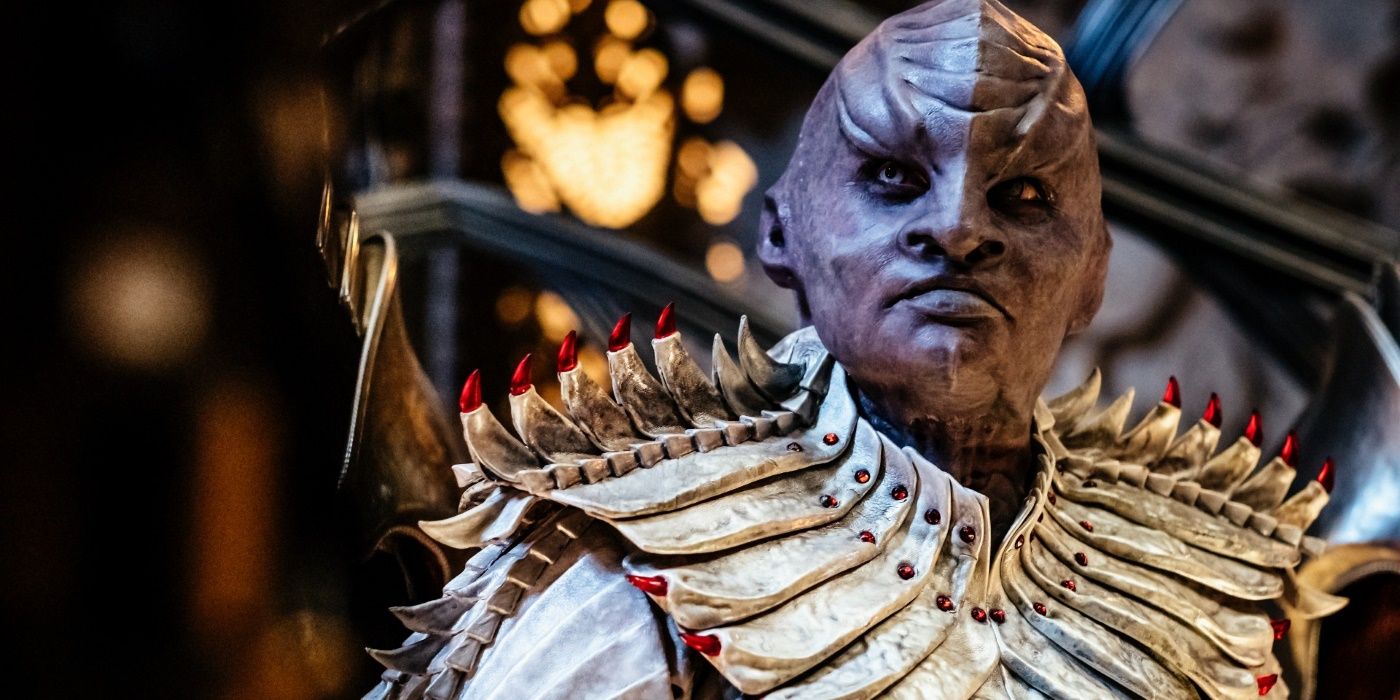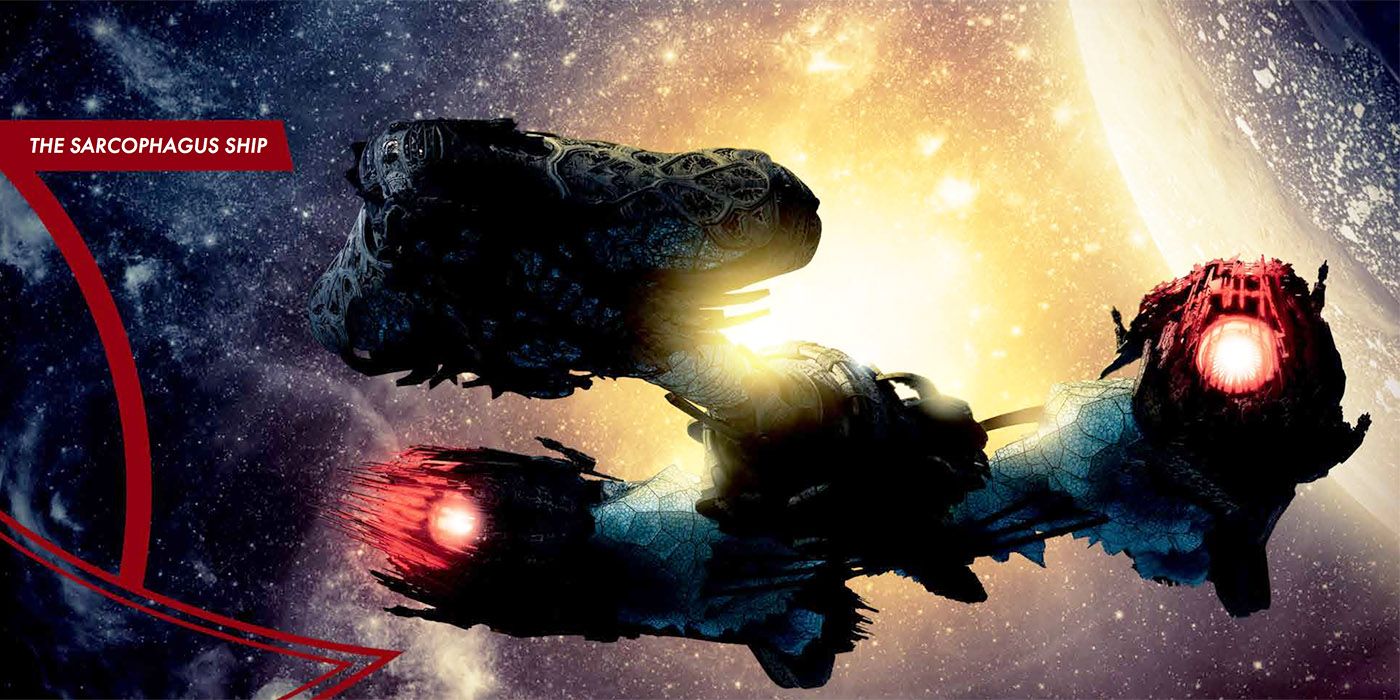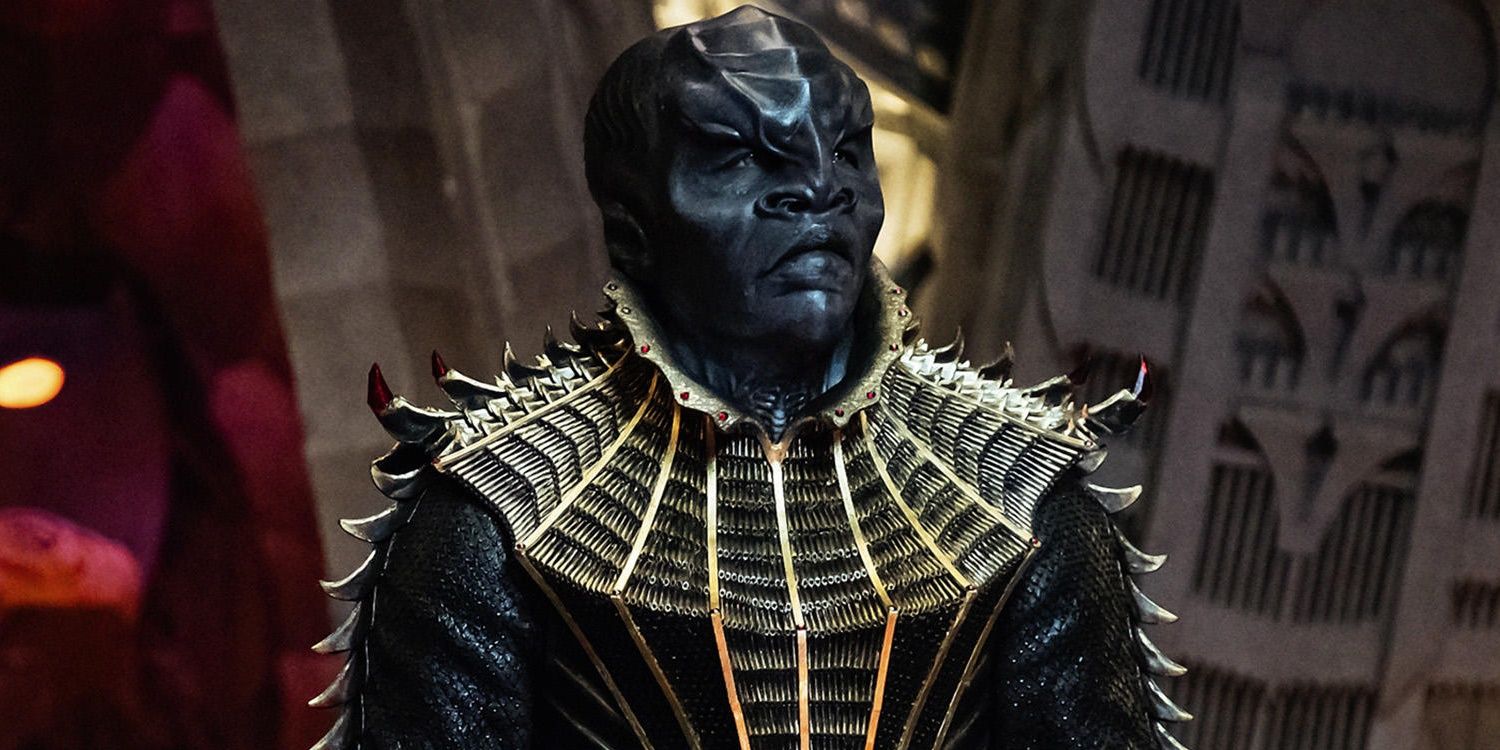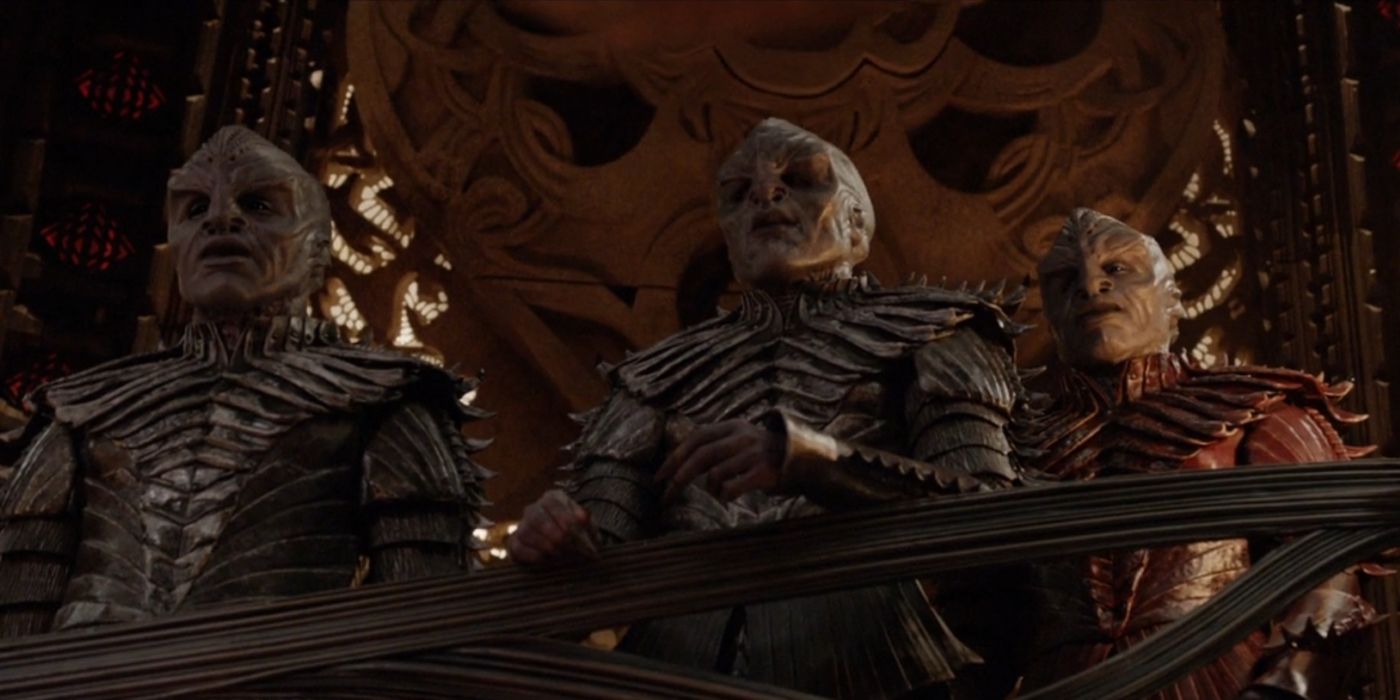Spoilers ahead for the first two episodes of Star Trek: Discovery
-
The two-part premiere of Star Trek: Discovery was a thrilling ride with vibrant, fascinating characters, and a new visual interpretation of Gene Roddenberry's classic creation. It's inevitable, however, that any attempt to breathe fresh life into a venerable franchise is going to come with some growing pains, and few things draw the ire of those resistant to change like new creators coming in and violating established continuity.
One canonical change that fans have been dwelling on is how the Klingons on Star Trek: Discovery somehow have access to cloaking technology. The antagonist, T'Kuvma, was able to render his flagship invisible to his enemies at a pivotal moment in the story. Yet Star Trek's long, complicated history says that Klingons shouldn't have cloaking devices on-hand for another decade or so.
Since last night's episode, "Context is for Kings," was quite light on Klingons, Star Trek: Discovery has not yet revealed how T'Kuvma was able to get his hands on cloaking tech. All we know is that his ship, which hasn't been named on the show but was informally known among the production crew as "the Sarcophagus Ship," is now the first known Klingon ship capable of cloaking. This flies in the face of information established by Star Trek: The Original Series.
Did T'Kuvma develop his own cloaking device, separate from the Klingon Empire's later efforts? Did he acquire the technology from another alien race, like the Romulans? That wouldn't be too hard to imagine, given the two empires' sharing of this technology a few years down the road.
There's no guarantee that Discovery will ever explain where T'Kuvma's cloaking device came from, especially if such a revelation doesn't serve the story. The matter at hand is that Klingons had cloaking tech much earlier than we were led to believe.
How is this possible?
In the original series episode "Balance of Terror," Captain Kirk and crew experience first contact with Romulans after a war with them ended a century earlier. They didn't even know at the time that Romulans looked like Vulcans, so the discovery that they had cloaking technology was one of several shocks. At the time, this was believed to be the first human contact with a cloaking device of any kind.
Star Trek: Enterprise later retconned this with the help of time travel and that whole "Temporal Cold War" thing. In a nutshell, thanks to the manipulative efforts of the mysterious Future Guy, Captain Archer and the Enterprise crew encountered cloaking technology that was being used by the evil Suliban, but thanks to a little futuristic help on their side of things, they came up with a device able to counteract cloaking. It's suspected that all of this was made classified by Starfleet, due to how mucking around with time tends to cause history to unravel.
For their part, the writers behind Star Trek: Discovery have already hinted that they know about the discrepancy. The script -- and namely the characters on the show -- identified their device as a "Cloaking Screen," not a cloaking device. See? So it's not the same! It's all cool now!
Except for a vocal contingent of Trekkies, it's not cool at all.
Here's the thing. Cloaking technology is not the only way in which Discovery plays fast and loose with Star Trek continuity. Another glaring change is the fact that Spock apparently had an adopted sister in Michael Burnham, whom he never once mentioned. For what it's worth, Discovery producers have promised that they have an answer for how Burnham's existence doesn't violate Spock's story, and that they'll reveal it eventually.
Then there's the design of the Klingons. From their costumes to their prosthetic makeup, they've evolved drastically since the days of Worf and Gowron. Taking a cue from J.J. Abrams' alternate timeline films, Discovery's Klingons are hairless, with bone ridges going all the way over the tops of their heads and down in back. Discovery takes things a big step further by introducing more pronounced ridges over the nose and head, and widely varied skin tones among the Klingon race.
The show itself as much as told viewers that the Sarcophagus Ship is a special case. It's not part of a Klingon militia, it's not a war machine. It's the ancestral ship of T'Kuvma's family. This was hammered home by the fact that its exterior was covered in the bodies and coffins of hundreds of dead Klingons. And if anything, the interior design of the Sarcophagus Ship has more in common with a church than a spacefaring vessel.
Discovery has also established that at this point in history, the Klingon Empire is a fragmented mess, its power divided among the 24 most powerful Klingon houses. So if every house has its own ship or ships that it built itself, that makes the Sarcophagus Ship very much one-of-a-kind. As a certain Jedi would say (sorry, wrong franchise), from a certain point of view, it could be argued that the cloak used by T'Kuvma wasn't owned or used by the Klingon Empire. Therefore, they have a little wiggle room to play with.
Ultimately, what has to be remembered is that if it is a contradiction of canon... So what? Yeah, that's a sacrilegious statement for some, but Star Trek is more than 50 years old now, and if you examine any media property that old closely enough, you're going to find discrepancies everywhere.
There are very few franchises that have lived as long as Star Trek. James Bond and Doctor Who come to mind. Bond has already been rebooted once. Doctor Who practically makes a habit of rewriting its own history on a seasonal basis. (It's literally about constant time travel. Do you really expect it to always add up?)
Star Trek's world is a huge, sprawling galaxy filled with countless cultures constantly going through the kinds of struggles and upheavals that have occurred throughout (real) history. Add in the numerous time periods Star Trek's stories are been set in, and you've got an incredibly complex canvas for modern storytellers to try to make accessible to new viewers.
What matters most is the emotional drama and interpersonal relationships between the characters. And Star Trek: Discovery has already shown how firm a grasp it has on that.




